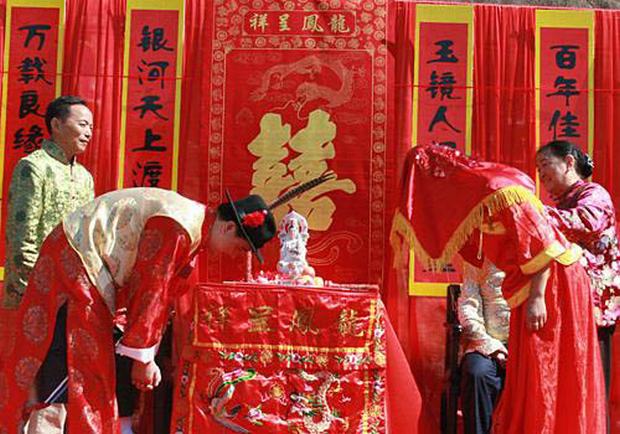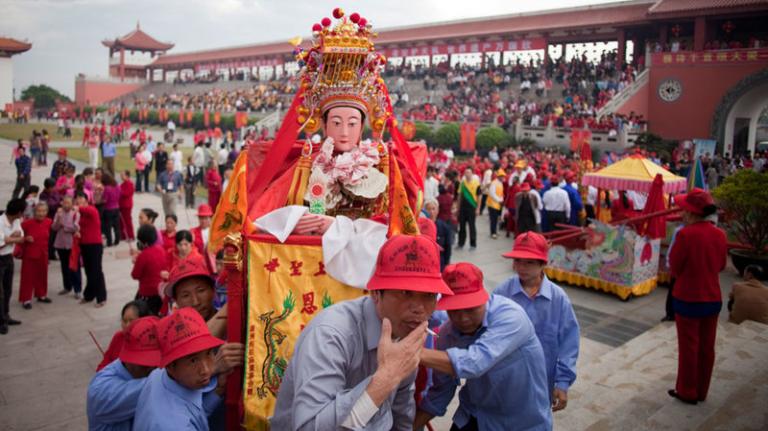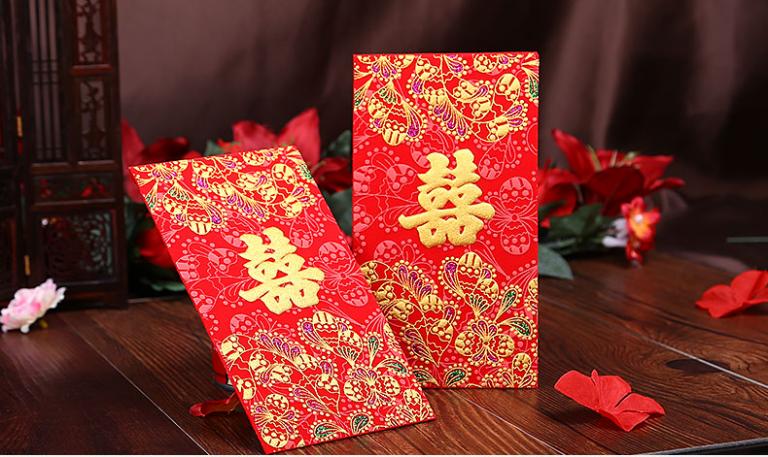Wedding Procedures
6 min readAccording to the old wedding custom of China,parents and matchmakers arranged the marriage.Especially for a woman,she had to”follow the man she married,in whatever ways”.She must obey her husband and abide by the decisions of her parents-in-law.The old wedding custom usually included the following procedures.

Engagement
The engagement was an indispensable procedure for the old marriage tradition.The process began with an elaborate marriage proposal and acceptance.The important parties in proposal and betrothal negotiations were the parents of the prospective bride and groom,rather than the bride and groom themselves.Marriage was considered too important a duty to be left in the rash hands of the young.This process was placed in the hands of a go-between,who acted as a buffer between the two parties-a role similar to that of a real estate agent today.
A.Bringing Together
Before the engagement,the matchmaker would go between the two families to communicate the conditions of both,such as the family estate,family members,the appearance,age and temperament of both parties,etc.Generally speaking,the bridegroom’s side would favor a literary family and the bride’s side a rich one.Only if parents of both sides were satisfied with each other was it possible to go on to the next procedure.
B.Consensual Marriage
“Consensual Marriage”means that the eight characters about both parties’birthday were taken to the fortune-teller by the matchmaker to reckon whether they were right for each other as far as their birth signs were concerned and whether the union would yield a lucky result.
Then the matchmaker would notify the results to the parents of both parties.For some discreet parents,they would see the other party at the appointed place when the fortune-telling results were thought lucky.If both parties were satisfied with each other,the”betrothal gifts”might be given.
C. Give Betrothal Gifts
It was the object matter of engagement to give betrothal gifts. The matchmaker wrote out the betrothal card and negotiated with the bride’s family to decide the items. Then the bridegroom’s side gave the betrothal gifts according to the betrothal card in three times. The betrothal gifts consisted of gift list, gifts and monetary gifts. The gift list was the most important because it was the attestation of a formal betrothal. After giving the betrothal gifts, the wedding day could be decided.

Preparation for Wedding
A. Installation of Bridal Bed
Preparation on the part of the groom involved the installation of the bridal bed on the day before the wedding. At a propitious hour on a selected day before the wedding day,a “good luck man”and a “good luck woman”, that is a man and woman with many children of both sexes, were selected to install a newly purchased bed. The “good luck man”would help to install the bridal bed in the correct place in the bridal chamber. The installation ceremonyconsisted of merely moving the bed slightly. The actual work was done earlier by servants or friends. The “good luck woman”would come to arrange the bridal bed. Then nobody is allowed to touch the bed until the couple entered the bridal chamber after the wedding ceremony.
Children were then invited onto the bed to bless the couple with fertility-the more children, the merrier. For the same reason, the bed was scattered with red dates, lotus seeds, peanuts, pomegranates and other kinds of fresh or dried fruits. Part of the fun was watching the children scramble for the fruits.
B. Dowry
Usually the bride’s dowry shall be sent to the bridegroom’s family by the day before thewedding day. Apart from jewellery, embroidered beddings, kitchen utensils and furniture, the traditional dowry normally consisted of such symbolic items as scissors,a pair of pillows, shoes, clothes, chopsticks tied in red ribbon and bowls were musts in a traditional marriage.
Wedding Ceremony
A. Cry-of-Marriage
Before the bride left for the bridegroom’s home, the “good luck woman”would lead her to the sedan chair. On her way to the chair, one of her sisters would shield her with a red parasol, while another sister would throw rice at the sedan chair. At the back of the sedan hung a sieve and a metallic mirror that were believed to protect the bride from evil.
Before she got on the bridal sedan chair bound for her new home, the bride had to cry to show that she did not want to leave her parents. She would cry over the love and care her parents had given her for so many years. At this moment, the bride’s mother would pass on to her daughter the secrets of how to be an adequate wife and daughter-in-law, how to handle the household with thrift and decency as well as make herself pleasant to every one of the new family, etc.
B. Escorting Bride to Groom’s House
It was the prelude of wedding ceremony to send a party for escorting the bride to the bridegroom’s house. On the day before the wedding, the bridegroom was supposed to visit the bride’s family and salute to all the family members of the bride but he couldn’t meet the bride.
On the day of wedding, the bridegroom should send an honor guard to the bride’s house. On the way to the bridegroom’s home, the honor guard would take the lead, followed by the bride’s sedan.
After various rules of rites, the bride would be carried to the sedan chair by her father or elder brother with the bridegroom standing by. When everything was all right, the bridegroom could take leave. The bride was still unseen to the bridegroom at this time with a piece ofred silk veil covering her head and face. Usually a crowd of friends would escort the bridegroom and musicians would play joyful tunes during the entire trip. Dancing lions, if any, preceded the troop. In ancient times,a bridal sedan chair(or a decorated donkey due to poverty or bad traffic) would be used to transport the bride.
C. Performing Formal Bows
After the sedan reached the bridegroom’s bridal chamber, an elder woman who had many offspring would support the hand of the bride and help her come out of the sedan chair in the wedding march. The woman would feed boiled rice dumplings to both bridegroom and bride because the round shape of the dumplings signify harmony and union. Then the candles and the incenses were lighted and the bridegroom and the bride held the two ends of a red ribbon respectively and met on the red carpet. They would bow to each other and then drink from the nuptial cups. Now came the climax of the wedding ceremony. The bride and bridegroom were led to the family altar, where the couple kowtowed to Heaven and Earth, the family ancestorsand parents successively. They then bowed to each other and were led to the bridal chamber.
D. Teasing Games in the Bridal Chamber
The teasing games started when the newly wed couple entered their bridal chamber after the wedding ceremony. Usually all young men could participate except forthe bride’s brothers-in-laws. The funny and silly games help ease the tension, since in ancient times the newlyweds never met each other before the wedding! The teasing games varied with regions.
E. Bridal Chamber
By the evening of the wedding day or, failing that, the next day, the bride should salute the uncles-and aunts-in-law. Then she would be led by the younger aunt or other female elderto salute all the elders. Next evening the new couple might have their supper(known as “Bridal Chamber Supper”) together in their bridal chamber for the first time. On the third day, the bride and the bridegroom would salute the memorial tablets of ancestors, which meant to show that marriage was not only for the bridegroom, but more importantly, for continuing the ancestral life.
F. Bride’s Return to Parents’ Home
Traditionally, the newlyweds were to return to visit the bride’s parents three days after thewedding. It is an indispensable etiquette.A month after the wedding the bride would visit her parents’ home again accompanied by her husband bringing many kinds of gifts. The bridegroom went home on the same day after the escort mission, leaving his wife stayingat her parents’ home for several days.









